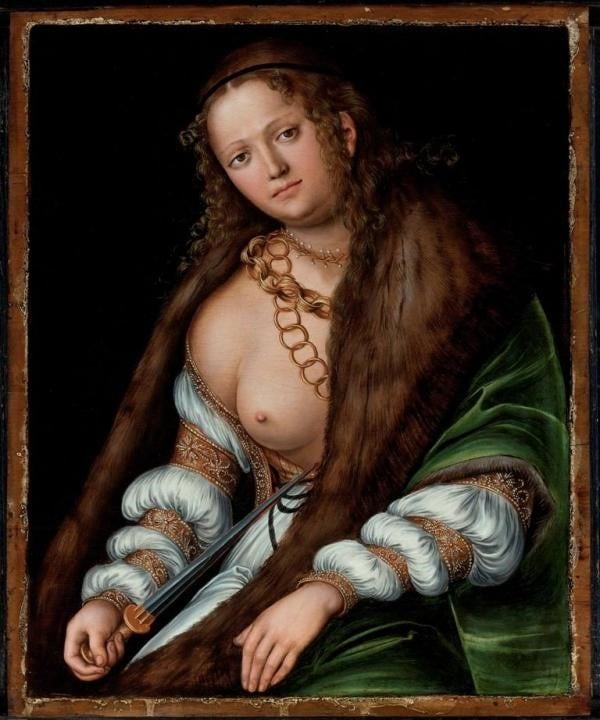
She’s back.
Sotheby’s is offering a portrait of Roman noblewoman Lucretia, by Lucas Cranach the Elder, in a private-sales exhibition at its Bond Street, London, salesroom. If the bare-breasted lady looks familiar, she is. The circa-1509 painting was last offered at Sotheby’s in New York quite recently, in January 2012. It sold for $5.122 million, the fourth highest price ever paid for a Cranach at auction. (The record, $8.6 million, was set in 1990.)
In 2012, the painting in the “Important Old Masters Sale” was given quite the white-gloved hard sell. A video of department chairman George Wachter praised her voluptuousness and noted that museums were likely to be interested. It sold in the mid-range of its $4 million to $6 million estimate (outpaced only by a Caneletto Venice scene.) The sale sheet listed as going to a “European private” in an auction that was only 59.7 percent sold.
What happened—economic distress? Buyer’s regret? Clashed with the furniture? Sotheby’s confirms that the 2012 buyer is now the seller but declines to give the price or comment on why. The consignor “is selling the work for private reasons.” But its reappearance does test the old art-world adage/advice not to resell a work publicly within five years. Victor Weiner, former executive director of the Appraisers Association of America and an expert frequently called in by Lloyd’s of London, notes that “it depresses prices” because, even if there’s nothing amiss with the artwork, “people ask what’s wrong with it that its being sold so soon?”
These “selling exhibitions” are growing in frequency in the auction world, especially at Sotheby’s, adds Wiener. “They prevent results that no one is happy about publicizing . . . what happens is totally unclear, and it’s meant to be.”
Cranach, a 16th-century court painter of Saxony and Germany, painted dozens of versions of Lucretia. Her story is particularly tragic: She committed suicide after being raped by Sextus Tarquinius, the son of the king. The enraged people of Roman expelled the royal family “laying the foundation for the establishment of a republic,” according to the Museum of Fine Arts, Houston, which owns a 1529 version.
Virtually all Cranach’s paintings of Lucretia feature the title character partially or fully topless (although, as the painter aged, she got much thinner). But, according to Sotheby’s, the leading experts on Cranach, Dr. Werner Schade and Dr. Dieter Koepplin now consider the circa-1509 painting to be the earliest version of the tragic figure.
It’s actually the third time it’s been up for sale at Sotheby’s: It was on the block in June 1988, selling for $352,000. That, by the way, is an annual return of 13 percent.
The Cranach is just one of about 20 Spanish, Italian, and Netherlandish objects or paintings in Sotheby’s “Contemplation of the Divine” exhibition running through July 26.